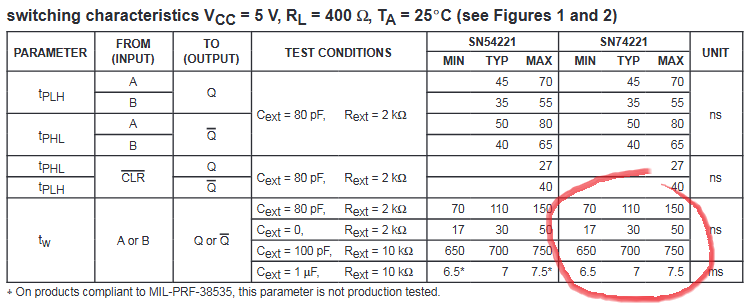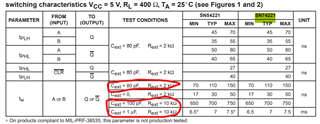Other Parts Discussed in Thread: CD74HCT221,
When I refer SN74221NE4 datasheet, they suggested to consider as ln2.
From the agile we see the part# we are using is SN74221NE4, referring to the datasheet :
tw(out) = CextRext In2 ≈ 0.7 CextRext
| R54 | 1% TOL | |||||||||
| 2100 | 21 | 2079 | 2121 | ln2 | R54 | C28 | TP32 | |||
| 0.693147 | 2.10E+03 | 1.00E-07 | 1.46E-04 | Ideal | ||||||
| C28 | 10% TOL | 0.693147 | 2.08E+03 | 9.00E-08 | 1.30E-04 | Min | ||||
| 1.00E-07 | 1.00E-08 | 9E-08 | 1.1E-07 | 0.693147 | 2.12E+03 | 1.1E-07 | 1.62E-04 | Max |
tw(out) = CextRext In2 ≈ 0.7 CextRext
I have an observation, In our board if R value is 2.1K ohm and C value is 0.1uF, I was trying to check overall min and max pulse from the multivibrator based on component tolerances as shown in above table.
Overall from theoretical calc, I see range of 130 us to 162 us, Vs my onboard measurements are under 130us. (In the range of 125us, while the input trigger is varied from 1khz to 8khz).
Am trying to understand, if am missing something?
Appreciate your feedback/comments.



